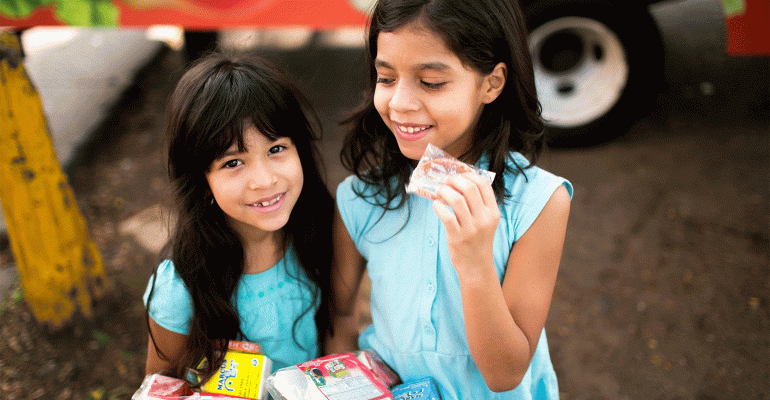In March 2020, in the immediate aftermath of COVID’s arrival, the restaurant industry banded together to support frontline workers and others who put themselves at risk of infection every day to provide basic goods and services to their communities.
Two years into the COVID-19 pandemic, restaurants continue to give back to their employees and communities — though some of the focus has changed.
“Restaurants have gone above and beyond to support not only their local communities and employees, but also philanthropic efforts since the start of the pandemic,” said Diana Hovey, senior vice president of corporate partnerships for the No Kid Hungry campaign at Washington, D.C.-based Share Our Strength.
“Our No Kid Hungry restaurant partners alone have helped raise over $20 million since the pandemic started — leveraging innovative methods for fundraising and engaging with communities and helping get food to where it's been needed most,” Hovey added.
The same has been seen at Nashville, Tenn.-based Children of Restaurant Employees, or CORE, said Sheila Bennett, executive director. She said that prior to March 2020, operators often conducted fundraising activities and encouraged donations from their customers. In the early days of the pandemic, however, companies donated directly to those in need.

According to CORE's Sheila Bennett, in the early days of the pandemic, companies donated directly to those in need.
“We saw an increase in direct donations from operators to support our work that directly helped employees in our industry,” Bennett said. “As restaurants reopened, they slowly began the introduction of product promotions that supported a cause. In 2022, brands are migrating back to incorporating product promotions to drive sales and support a cause.”
The past two years have changed philanthropy in the foodservice industry in important ways. Hovey said No Kid Hungry was “the force behind the largest infusion of private capital into school nutrition programs by any organization during the pandemic.”
“The restaurant industry raised critical funds and awareness over the past two years that helped provide over $100 million in grant funds to help schools and community groups feed children in need throughout the pandemic,” she said. “This incredible effort supported 2,400-plus grantees across all 50 states, D.C., Puerto Rico and Guam.”
Bennett said operators also have come to better realize the value of helping their communities. She believes they’re now looking for causes that are more aligned with their core mission or have a positive impact on their business.
While the industry has remained committed to philanthropy even in the midst of unparalleled challenges like inflation and labor, nonprofits and other organizations have faced their own hurdles — primarily in getting in front of industry leaders during a shutdown.
“Now that the world is opening up again,” Bennett said, “getting the message out to an industry that CORE exists as a resource for operators and that we are also a nonprofit to support is a big challenge. During the pandemic, we were not able to meet or network in person for almost two years.”
As philanthropic organizations look toward a post-pandemic era, they continue to see plenty of need in communities.
“In the wake of the coronavirus, millions of children in the United States are still facing hunger — as many as one in six kids this year,” Hovey said. “Restaurant operators and brands have seen this need and we expect that in the next few months we will continue to see innovation and commitment as we all work together to end childhood hunger.”
She added that this fall, No Kid Hungry will unite the restaurant industry and other corporate partners through the fall campaign, “Food is the Most Important School Supply.” The campaign will engage brands, employees, consumers, influencers and others.
“This is especially critical knowing that while the pandemic seems to be easing, the long-term economic impacts will continue to be felt for years to come,” she said. “As we face this and other challenges, the industry’s support will continue to be critical to ensuring no child goes hungry.”
Bennett of CORE said the restaurant industry’s long-held virtue of giving back will continue.
“Our industry gives back to those who need it the most,” she said. “They give back in a big way in the communities in which they serve. This industry has a big heart. I believe that many brands may look to align their organizational mission with how they give back and in the selection of who they support. The practice of giving will continue, grow and have greater meaning.”
Read more:
MENU: Two years after the pandemic started, menus are leaner, smarter — and often better
OPERATIONS: Sustainability moves up priority list after COVID’s shut-down lessons
SERVICE: Consumers will want to choose their own experience in a post-pandemic world
TECHNOLOGY: Virtual brands have matured from curious idea to pandemic life saver
Contact Ron Ruggless at [email protected]
Follow him on Twitter: @RonRuggless





